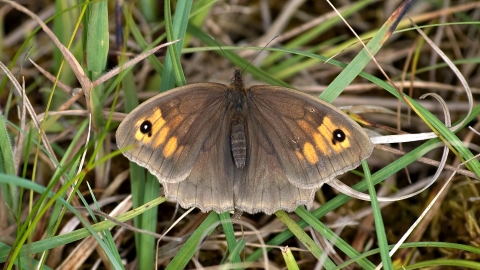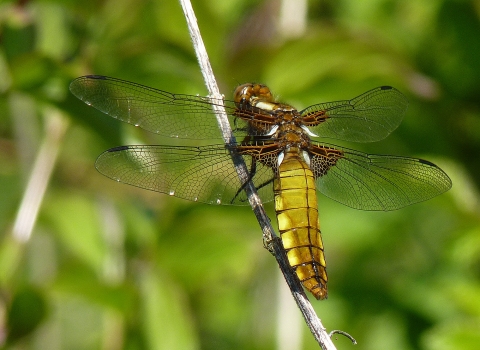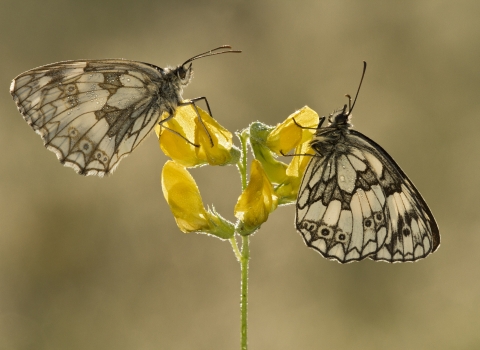
Meadow Brown Butterfly - Bob Coyle
Know before you go
Dogs
Visit the 'Dog walking on reserves' page in the Contact section for more information.
When to visit
Opening times
Open at all timesBest time to visit
April to JulyAbout the reserve
Somerset Wildlife Trust have owned eight of the nine fields that make up the Babcary Meadows SSSI (Site of Special Scientific Interest) since 1999. Babcary Meadows is one of the last remaining areas of traditionally managed, flower rich, unimproved neutral grasslands in south Somerset.
The reserve lies alongside the River Cary. Areas immediately adjacent to the river bank are frequently waterlogged and contain numerous tussocks of soft rush. Other damp ground plants found here include Meadowsweet, Cuckoo Flower, Saw-Wort, Devil’s-bit, Creeping Jenny, Pepper Saxifrage and Corky-fruited Water-Dropwort which is restricted in its distribution to the south of Britain.
On the higher and drier ground in late spring you can see Green Winged orchids and Cowslips and a little later, in June, Yellow Rattle, Bee and Common Spotted orchids, whilst mid-Summer sees a swathe of white Oxeye Daisies take over.
As well as being home to a diverse range of plant species, over two hundred have been recorded, Water Voles have been recorded along the riverbank and the songs of Skylarks and other birds add to the atmosphere of this rural idyll. During June and July large numbers of butterflies use the meadows including Meadow Browns and Marbled Whites.
This SSSI is a traditional lowland hay meadow; a habitat that has declined dramatically since the Second World War.
Reserve conservation management - The hay is cut mid-July onwards to allow the wildflower to set seed. Some fields may be cut earlier or later in the year to provide an extended period of flowering plants as nectar sources for invertebrates. In the autumn, the re-growth (aftermath) is grazed by cattle to reduce the dominance of grasses. The hedges are cut on rotation over the winter, with no more than half being cut in any one year.
Access and Safety
- Cattle can be grazing in the fields from late-summer to early-winter.
- Be aware that the banks of the River Cary are steep and can be slippery.
History and Archaeology - The most easterly of the fields rises to a significant dome and has three mounds. These have not been investigated but may be some archaeological remains of burial or other features. There are signs of significant ridge and furrow, in some fields, probably the result of medieval strip arable farming methods, caused by single sided ploughing that moves soil from the edge of the strip to the centre. Ditch remnants suggest that the riverside fields may have formed part of a ‘catch meadow’ (a slope water meadow system).


